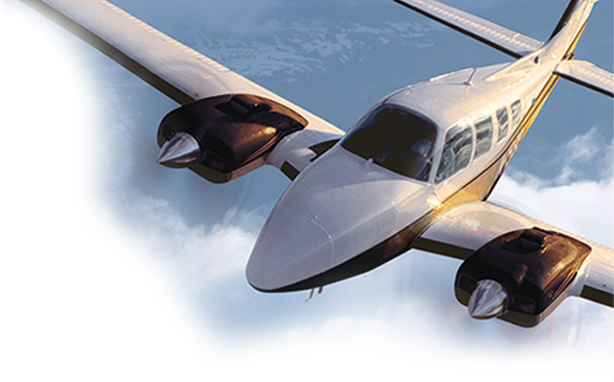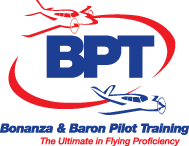Just Because It’s Legal
Doesn’t Mean It’s Smart
By Sarah Rovner,
Master CFI, CFII, MEI, ATP
Owner of FullThrottle Aviation LLC
It could not have been a more beautiful day to fly. The crisp, cool fall air with a gentle breeze made for the perfect day of flying. With an occasional cloud drifting overhead, he pulled his newly-painted Cessna 206 out of the hangar. After closing the doors behind him, he jumped in the plane and started getting ready to fly out and meet friends for a $100 hamburger. As he turned the key to the starter, he heard an abnormal click instead of the normal cranking. He released the starter and then tried it once more. Yet instead of the geared beast turning his 3-bladed prop, yet another wimpy click was heard. The battery was dead, but he sure wasn’t going to waste a perfect day sitting at home. He was determined to fly. He had seen a video or two of hand propping, and figured it was something he could try himself. He had never done it before, but “knew” the basics. The next call he made was to tell the airport manager that his plane had gotten away from him and went into a hangar.
“You can’t legislate good judgement.” A simple phrase that every pilot has heard and has spanned across many industries even outside aviation. Having done it many times myself, hand propping isn’t illegal and can actually be done very safely in a variety of applications. However, this particular pilot’s inexperience and reasoning behind his actions showed that safety wasn’t his first priority. In fact, there are many times that an action might not be illegal, but it’s definitely not smart. We see it every day on the road – drivers take actions that may not be illegal in that particular state but end up in an accident or near collision.
Aviation regulations, although inclusive of many situations’ pilots could find themselves in, leave a lot to judgement. As instructors, we make every attempt to teach our pilots good judgement because the regulations could not possibly account for every situation a pilot could find themselves in. Scenarios like taking off with a tailwind, using special VFR, and ceiling/visibility for instrument pilots all require a good level of judgement for safe operation. Pilots often find themselves in decision making scenarios in which an action might be legal, but definitely not smart.
As a newer instrument pilot, I found myself walking the line between legal and smart quite a bit. In fact, most pilots find themselves doing the same. Deciding the minimum ceiling and visibility I was comfortable in versus what the chart said were often two completely different things. A few weeks ago, I found myself shooting an approach in a Bonanza to Egglistadir (BIEG) in northeast Iceland, thinking about how important proficiency was in small aircraft since I most often fly instrument in jet aircraft with high levels of automation. One of the best tools I was introduced to and have come to use regularly is the personal minimum’s checklist found on the FAA’s website here.
This tool allows pilots to assess their personal level of proficiency and comfort with different aspects of their environment to determine what minimums they need to put on themselves to ensure that safety is not compromised. Factors that many pilots don’t think of such as fatigue, comfort with aircraft type, and equipment on board can all change the minimums they should use.
As a ferry pilot, I jump between many different types of aircraft. I will often get into and fly aircraft types that I have not flown for long periods of time and then take them across the country. My first time back in a turbine Air Tractor after having not flown one for nearly 8 months meant that I wasn’t going to take it into the challenging conditions that I would fly my Super Cub in. For new types of aircraft or types of aircraft I’m not current in, I often limit my crosswind limit to 5 knots and no tailwinds until I get a few landings in. In aircraft types that I don’t fly often, I limit my ceilings to 500 feet for precision instrument approaches, and even higher in aircraft without an autopilot. I used to say that “every pilot is different,” but I now say that “every pilot is different in different aircraft.” Understanding the limitations of your skillset, proficiency, equipment, and environment is paramount to safety.
We have all seen many NTSB reports and safety videos on pilots who made bad decisions. Pilot error still accounts for the majority of accidents and incidents. As we read the probable causes, we think to ourselves “what were they thinking?” Often times the pilot’s actions weren’t contrary to the Federal Aviation Regulation’s, but definitely were not very smart and contributed to an accident. The next time you make a decision in the aircraft, run the options against your personal minimums’ checklist and knowledge of safe operating procedures. If it passes the first test of being legal, make sure that it also passes the second test of being smart. After all, just because it’s legal doesn’t mean it’s smart!
Sarah Rovner holds an ATP certificate with a CL-65 type rating and is currently an FAA Safety Team Lead Representative, Master Instructor, Captain and CTP simulator instructor with a Part 121 airline. Since changing careers after years as a senior network engineer for the oil & gas industry, Sarah has obtained her ATP, CFI, CFII, MEI and has flown over 4200 hours. As the owner of an international ferry pilot company, FullThrottle Aviation LLC, Sarah has flown over 117 different types of general aviation airplanes in 15 different countries, including oceanic crossings in small aircraft. She continues to stay involved in general aviation through mentoring and education; volunteering at many different events and presenting original seminars on aviation safety and human factors. Although much of her flying is now professional in nature, she still enjoys flying her Super Cub on her days off. As a regular attendee of EAA AirVenture and local fly-ins, she enjoys the company and camaraderie that general aviation brings.
* Clicking this link will take you to a website not affiliated with Avemco. Your use of that website is subject to the privacy policy posted on that site. Avemco assumes no responsibility for other entities’ privacy practices or your use of their websites.
Articles and news items provided by Avemco® are not intended to provide technical or legal advice. Content is for general information and discussion only and is not a full analysis of the matters presented. The information provided may not be applicable in all situations, and readers should always seek specific advice from the FAA and/or appropriate technical and legal experts before taking any action with respect to any matters discussed herein. Articles provided by independent sources solely reflect the views of their respective authors and should also not be regarded as technical or legal advice.



